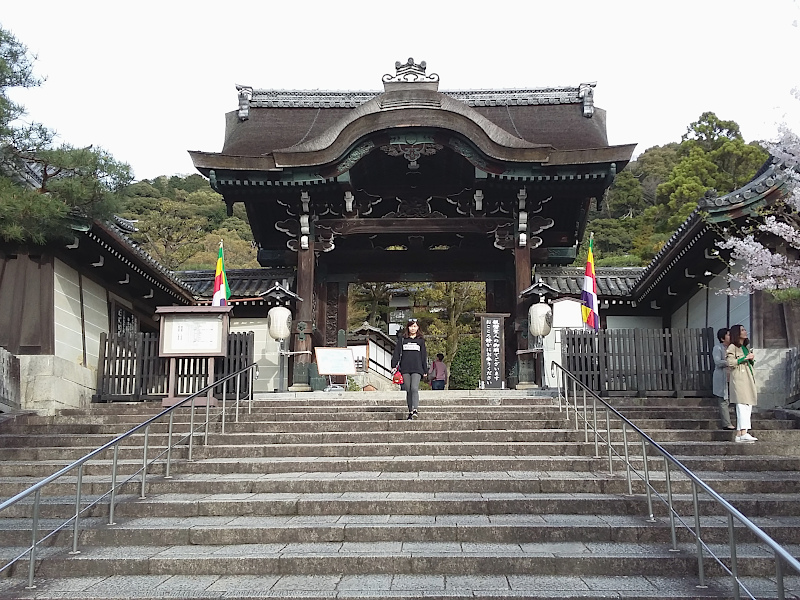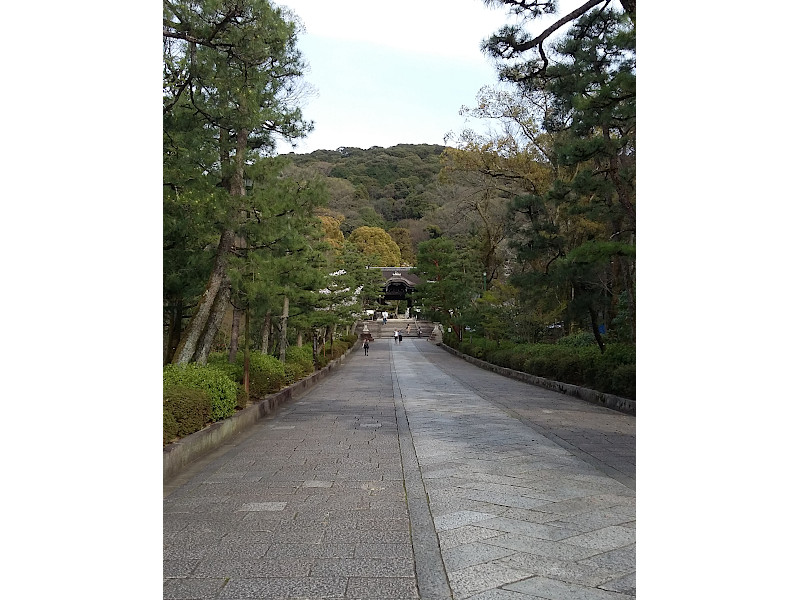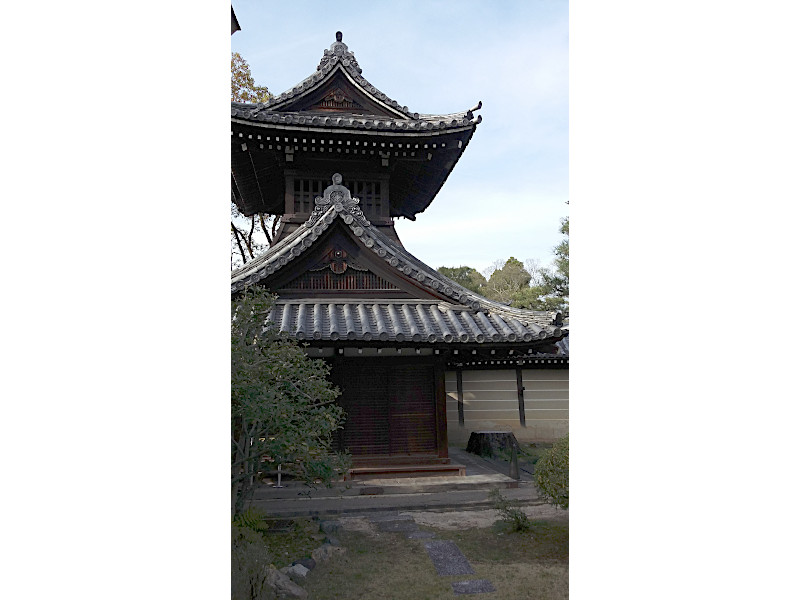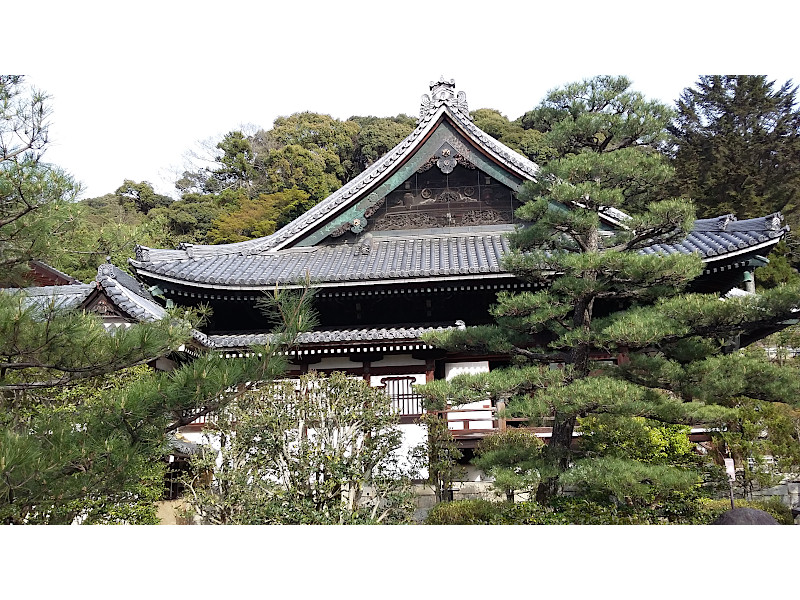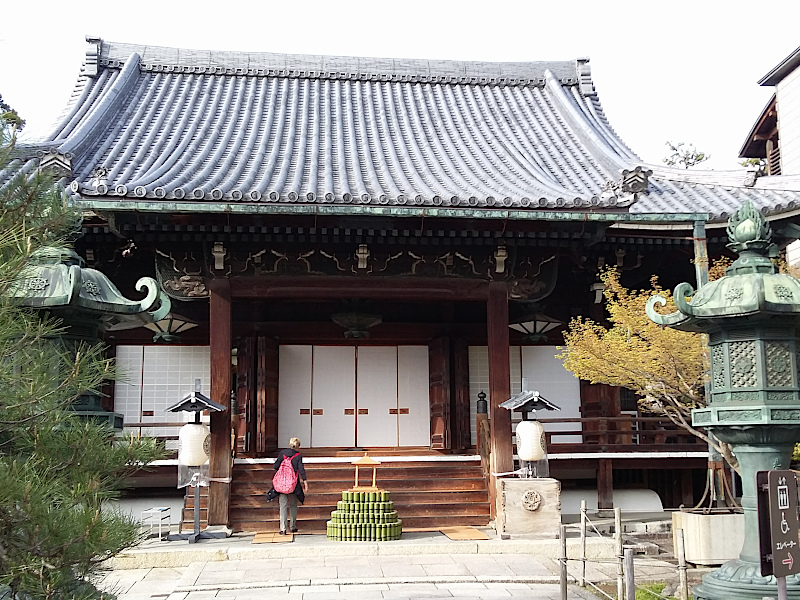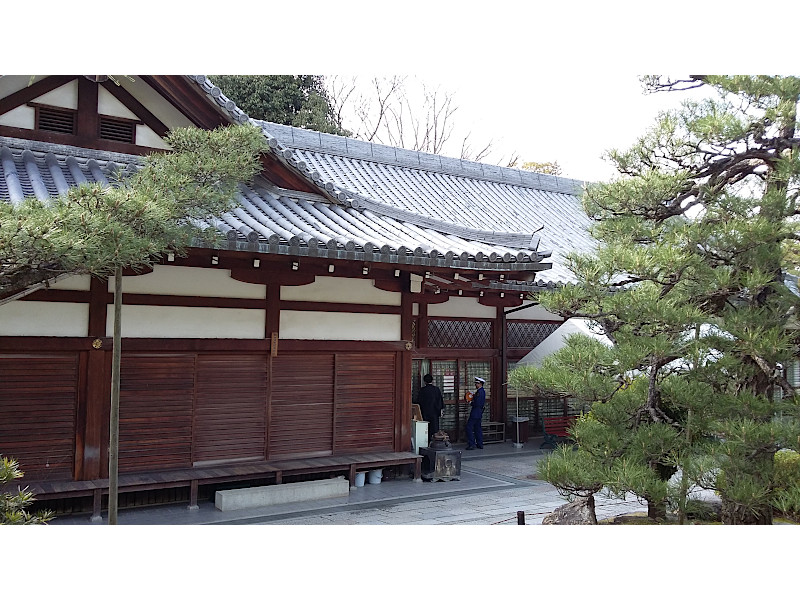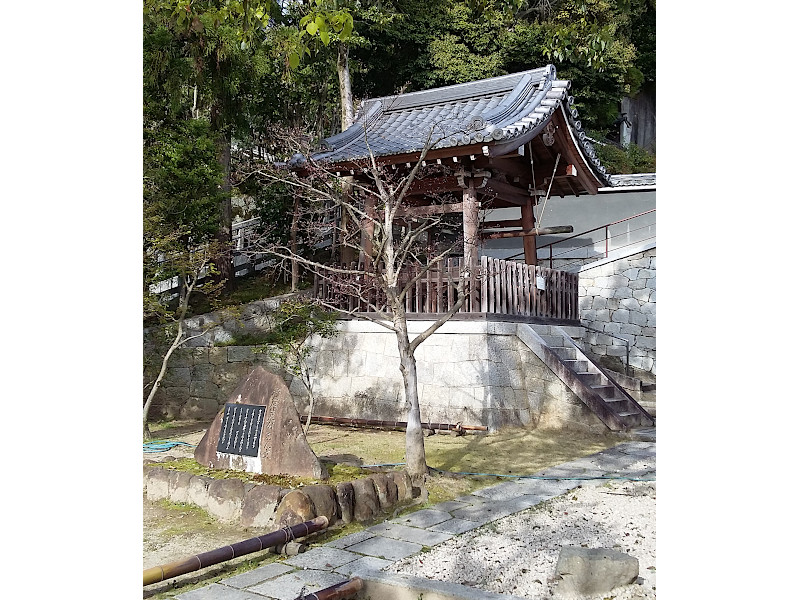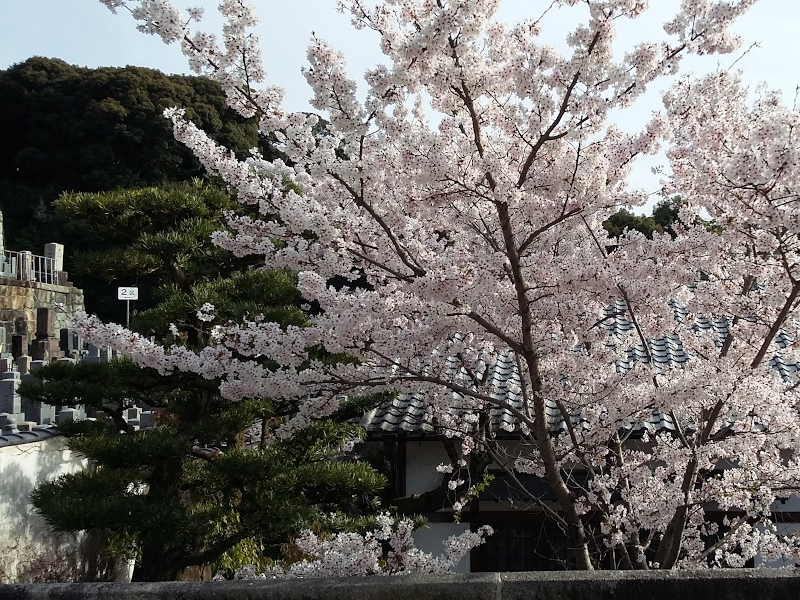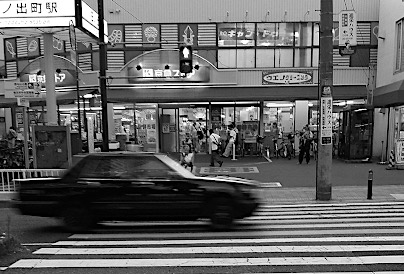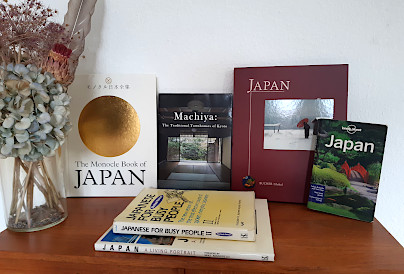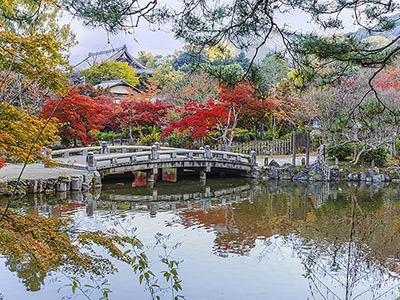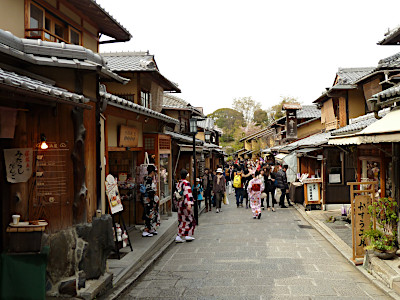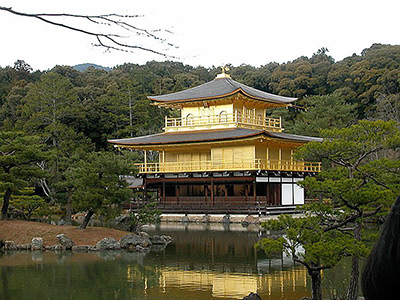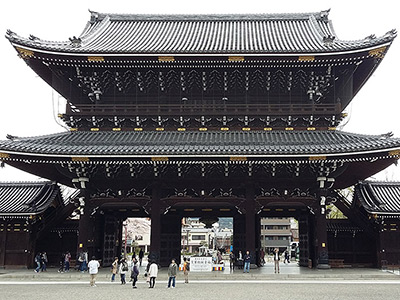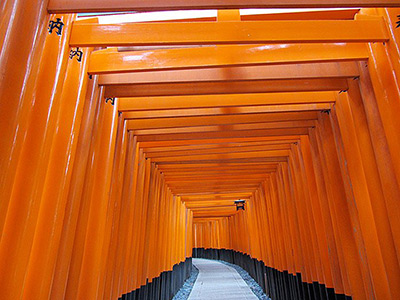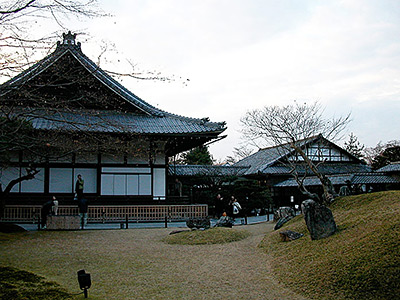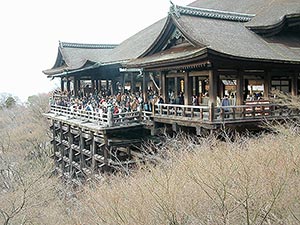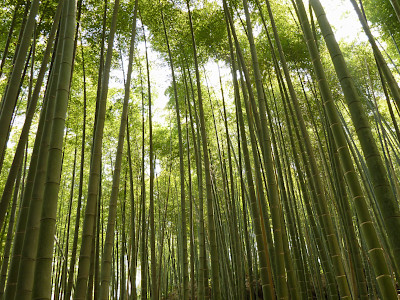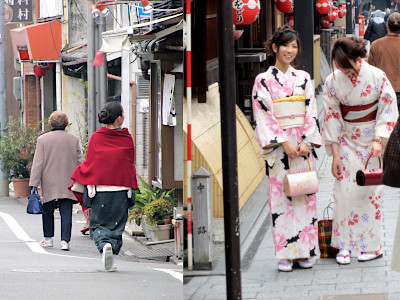Otani Sobyo in Kyoto
This post can contain affiliate links, which means that we may receive a small commission if you make a purchase using these links.
Facts & Figures
Otani Sobyo in Kyoto is also known as Higashi Otani. It belongs to Higashi Honganji (Eastern Temple), which is the head temple of Shinshu Otani-ha, a branch of Pure Land Buddhism. Otani Sobyo contains one of the largest Buddhist graveyards in the city. There you will find also the last resting place of Japanese Buddhist monk Shinran (1173 - 1263). He was the founder of the Jodo Shinshu sect of Japanese Buddhism. Many followers visit the mausoleum from around the country. There are two sites in Kyoto with cremated remains of Shinran (Kenshin Daishi). The other can be found at Otani Hombyo Temple in Kyoto. Highlights of Otani Sobyo were for me the impressive entrance gate, main hall, graveyard of Shinran and the huge cemetery.
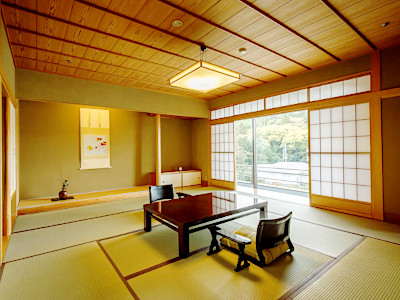 Explore Ryokans in Kyoto >
Explore Ryokans in Kyoto >
Ryokans are the perfect way to discover old Japanese culture and traditions.
- Otani Sobyo:
- Opening Hours - 5:00 am to 5:00 pm
- Closed - no closing days
- Admission Fee - free
My tips for local activities
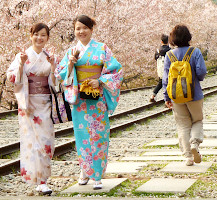
How about exploring the best parts of my favourite city Kyoto with a local guide? The personalized tour by our partner GetYourGuide can take between 2 - 8 hours. For more details check out this page >
History
In 1262 Shinran (1173 - 1262), known as Kenshin Daishi and founder of the Jodo Shinshu sect, died at the age of 90. Ten years after his death in 1272 the Otani Sobyo Mausoleum was built by his youngest daughter Kakushin-ni. The mausoleum was moved many times to different locations and finally in 1670 it found its place at the current spot within the Higashi Honganji Temple grounds in Kyoto. The temple itself was established by Shogun Tokugawa Ieyasu (1543 - 1616) in the year 1602. At the end of the 17th century the mausoleum and halls were rebuilt. Shogun Tokugawa Yoshimune (1684 - 1751) donated in the year 1745 approximately 33000 square meters of land so that the Otani Sobyo Mausoleum could be extended.
Location

Otani Sobyo is located within the Higashiyama District in Kyoto near Maruyama Park and Kodai-ji Temple.
Address: 477 Maruyama-cho, Higashiyama-ku, 605-0071 Kyoto
How to get to Otani Sobyo?
- 20min from to Gion bus stop by bus number 206 or 207 and
- 10min walk from Gion bus stop to Otani Sobyo
Sightseeing spots
Top:
Main Hall - The main hall was completed in 1701. It contains the statue of Amitabha (principal Buddha of Pure Land Buddhism).
Omote Karamon - The impressive front gate with its beautiful wooden carvings is a must see during your Kyoto visit.
Grave of Shinran - The last resting place of the famous Buddhist monk Shinran is also know as gobyou.
Higashi Otani Cemetery - The cemetery covers a huge area and you should take your time to explore this place.
Festival & Events (dates can change without notice)
March
Higashiyama Hanatouro Festival (Early - Mid March)
The illumination of local temples and roads by thousands of lanterns in the Higashiyama neighbourhood last for 10 days and starts at 6pm until 9:30pm. It is an unforgettable experience.
April
Miyako Odori (1st - 31th)
The traditional annual spring dance of the Kyoto district Gion Kobu performed by Geiko and Maiko is a must-see on your Kyoto visit. Don't miss the most popular dances the Miyako Odori "Cherry Blossom Dances" or "Dances of the Old Capital" at the Gion Kobu Kaburenjo Theater (located close to Gion Corner).
May
Aoi Matsuri (15th)
The highlight of this festival is a large parade from Imperial Palace through Shimogamo Shrine to the Kamo Shrines. More than 500 people wearing aristocratic costumes from the Heian Period (794 - 1185). The Aoi Matsuri belongs with the Gion Matsuri and Jidai Matsuri to the three most famous festivals in Kyoto.
July
Gion Matsuri (whole month)
The month July is full of different events like the Yoiyama - Kyoto's Magical Night (locals in kimonos look at the giant Gion floats the day before the parade) or the famous Yamaboko Junko (float procession on the 17th of July).
August
Manto-Kuyo Ceremony at Otani Sobyo (14th)
During this event, which is related to Obon, Otani Sobyo Mausoleum and the nearby Otani Cemetery are beautifully lit up with thousands of lanterns and candles to guide the homecoming spirits and ancestors on their way.
October
Jidai Matsuri ("Festival of Ages") (22nd)
People celebrate with a large parade between Imperial Palace to Heian Shrine the anniversary of the foundation of Kyoto. App. 2000 participants wearing historical costumes from different time periods. Enjoy this great festival which last around 2 hours.
Where to stay in Kyoto?
Day trips from Kyoto:
My 100 Best Moments in Japan
I have visited Japan nearly every year since 2004. This is my collection of the 100 best moments in my favorite country. Enjoy the pictures and I hope you will start your own journey soon.
Find out more >
Books about Japan
Reading books is a great source of inspiration for me. Check out my recommended list of books about the fascinating country Japan.
My Book recommendations >

